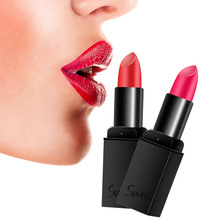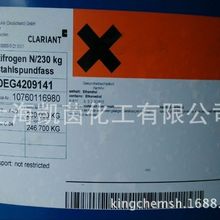Pressure boost squeezes out more hydrogen from artificial leaves
Hydrogen-producing artificial leaves might soon be even better at their jobs thanks to a new study that examined the effects of pressure on the chemical processes they run. It all comes down to bubbles.
When it comes to certain processes, it's hard to beat nature. Take photosynthesis, for example. Thanks to their leaves, trees are able to suck carbon dioxide out of the air, combine it with water and get the energy they need to live, while kicking back a healthy dose of oxygen to the rest of the planet.
So instead of trying to do one better than a leaf, scientists have spent years trying to mimic it and apply its principles in unique ways. While we've seen artificial leaves that can produce everything from synthetic gas to pharmaceutical drugs, one of the most promising uses of the little pieces of tech is to free up hydrogen from air and water. This happens in natural photosynthesis as plants pull apart the hydrogen and oxygen atoms of water molecules.
Current hydrogen-producing artificial leaves – known as photoelectrochemical cells (PECs) – use light-powered electrodes to create the current that splits water in hydrogen and oxygen. The best of them have an energy conversion rate of 19%, a measure of how much net power is derived from a system. The best currently operating solar panels, for comparison, have an energy conversion rate of about 24%.
One of the issues with pushing PECs beyond this rate is that during the process, bubbles begin to form in the electrolyte solution in which the electrodes are operating. These bubbles can get in the way of the solution touching the electrodes and can also interfere with the system's ability to absorb light.
Thinking they could tame the bubble problem, researchers from Germany's Helmholtz-Zentrum Berlin für Materialien und Energie (HZB) tested the idea of applying more atmospheric pressure to the internal workings of PECs. They found that if operating pressure was increased to 8 bar, they were able to keep the bubbles at bay enough to halve the total energy loss of the system, which could lead to a 5-10% greater energy conversion rate than the current gold standard systems.
"The optical scattering losses can be almost completely avoided at this pressure," said study first author Feng Liang. "We also saw a significant reduction in product cross-over, especially the transfer of oxygen to the counter electrode."
Liang and his colleagues have reported their findings in the journal Nature Communications.
Source: HZB
(责任编辑:新闻中心)
- ·21 College and University Museums
- ·11 Places Where Dolls Are a Frightening Sight
- ·25 Places to See the History of American Industry
- ·OpenAI receives the world's most powerful AI GPU from Nvidia
- ·Blinken condemns Russia
- ·How Covid Changed Nursing
- ·How Covid Changed Nursing
- ·“快节奏”时代是否还需要读书?
- ·Sports minister says audits into football, badminton federations set to conclude in Sept.
- ·N. Korea refuses all contact, including summit, with Japan
- ·Police bust crypto scammer who received plastic surgery to evade arrest
- ·A Global Tour of Bakeries With Fascinating Histories
- ·MIT's powerful chip offers AI boost, defense against data breach
- ·Gateway 2000: Gone But Not Forgotten
- ·Abrar Ahmed returns as Pakistan names squad for second Test against Bangladesh
- ·Customizable Dyson Airwrap is $100 off in April 2024
- ·Seoul slams 'irresponsible' Russian veto ending UN N. Korea sanctions monitoring
- ·Going Ergonomic: How to Make Your Computing Life Better
- ·全国土壤普查办抽验组到广东开展土壤普查质量抽验
- ·North Korean and Vietnamese party officials advocate strengthening bilateral ties













